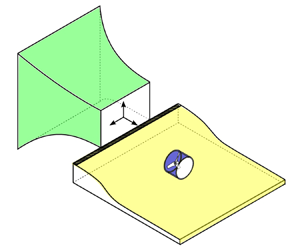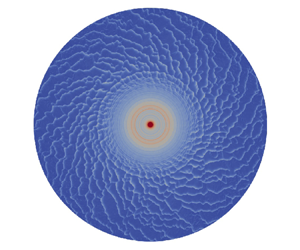Refine listing
Actions for selected content:
1417116 results in Open Access
Similarities and differences between specification and non-uniform specification
- Part of
-
- Journal:
- Ergodic Theory and Dynamical Systems / Volume 44 / Issue 12 / December 2024
- Published online by Cambridge University Press:
- 15 April 2024, pp. 3501-3529
- Print publication:
- December 2024
-
- Article
- Export citation
Five Times Faster: Rethinking the Science, Economics, and Diplomacy of Climate Change, by Simon Sharpe Cambridge University Press, 2023, 344 pp, £20 hb ISBN 9781009326490
-
- Journal:
- Transnational Environmental Law / Volume 13 / Issue 1 / March 2024
- Published online by Cambridge University Press:
- 15 April 2024, pp. 223-226
-
- Article
- Export citation
Introduction: Monarchism, Print Culture, and Language in Colonial India
-
- Journal:
- Victorian Literature and Culture / Volume 52 / Issue 1 / Spring 2024
- Published online by Cambridge University Press:
- 15 April 2024, pp. 2-13
-
- Article
- Export citation
Victoria Maharani: Queen Victoria and the Princely State of Travancore
-
- Journal:
- Victorian Literature and Culture / Volume 52 / Issue 1 / Spring 2024
- Published online by Cambridge University Press:
- 15 April 2024, pp. 191-211
-
- Article
-
- You have access
- Open access
- HTML
- Export citation
Guest editors’ foreword: Mobilising global knowledge: institutionalising expertise in East Asia's industrial transition
-
- Journal:
- Journal of the Royal Asiatic Society / Volume 34 / Issue 3 / July 2024
- Published online by Cambridge University Press:
- 15 April 2024, pp. 493-497
- Print publication:
- July 2024
-
- Article
- Export citation
Frequency-dependent
 $\textrm{H}_{{\infty }}$ control for wind disturbance rejection of a fully actuated UAV
$\textrm{H}_{{\infty }}$ control for wind disturbance rejection of a fully actuated UAV
-
- Article
-
- You have access
- Open access
- HTML
- Export citation
Lead Kindly Light: Essays for Fr Ian Ker edited by P. Shrimpton, Gracewing, Leominster, 2022, pp. xxiii + 351, £20.00, pbk
-
- Journal:
- New Blackfriars / Volume 105 / Issue 3 / May 2024
- Published online by Cambridge University Press:
- 15 April 2024, pp. 331-334
- Print publication:
- May 2024
-
- Article
- Export citation
Imaginary work: media representations of work and gender in Italy from the economic miracle to the present day
-
- Journal:
- Modern Italy / Volume 29 / Issue 2 / May 2024
- Published online by Cambridge University Press:
- 15 April 2024, pp. 197-217
- Print publication:
- May 2024
-
- Article
-
- You have access
- Open access
- HTML
- Export citation
Distributed digital twins for health monitoring: resource constrained aero-engine fleet management
- Part of
-
- Journal:
- The Aeronautical Journal / Volume 128 / Issue 1325 / July 2024
- Published online by Cambridge University Press:
- 15 April 2024, pp. 1556-1575
-
- Article
-
- You have access
- Open access
- HTML
- Export citation
The Impress of the Empress: Provincializing the Queen in the Telugu Desa
-
- Journal:
- Victorian Literature and Culture / Volume 52 / Issue 1 / Spring 2024
- Published online by Cambridge University Press:
- 15 April 2024, pp. 84-103
-
- Article
-
- You have access
- Open access
- HTML
- Export citation
AST volume 22 issue 1 Cover and Back matter
-
- Journal:
- Journal of Anglican Studies / Volume 22 / Issue 1 / May 2024
- Published online by Cambridge University Press:
- 15 April 2024, pp. b1-b2
-
- Article
-
- You have access
- Export citation
True ‘contradictions’ and conflicts in the Talmud
-
- Journal:
- Religious Studies , First View
- Published online by Cambridge University Press:
- 15 April 2024, pp. 1-14
-
- Article
-
- You have access
- Open access
- HTML
- Export citation
Aeroacoustics of a ducted fan ingesting an adverse pressure gradient boundary layer
-
- Journal:
- Journal of Fluid Mechanics / Volume 985 / 25 April 2024
- Published online by Cambridge University Press:
- 15 April 2024, R1
-
- Article
-
- You have access
- Open access
- HTML
- Export citation
Twisted Blanchfield pairings and twisted signatures III: Applications
- Part of
-
- Journal:
- Glasgow Mathematical Journal / Volume 66 / Issue 3 / September 2024
- Published online by Cambridge University Press:
- 15 April 2024, pp. 501-540
- Print publication:
- September 2024
-
- Article
-
- You have access
- Open access
- HTML
- Export citation
Dirichlet-type spaces of the unit bidisc and toral 2-isometries
- Part of
-
- Journal:
- Canadian Journal of Mathematics / Volume 77 / Issue 4 / August 2025
- Published online by Cambridge University Press:
- 15 April 2024, pp. 1271-1293
- Print publication:
- August 2025
-
- Article
-
- You have access
- Open access
- HTML
- Export citation
Moderatism and Truth
-
- Journal:
- Canadian Journal of Philosophy / Volume 53 / Issue 3 / April 2023
- Published online by Cambridge University Press:
- 15 April 2024, pp. 271-287
-
- Article
-
- You have access
- Open access
- HTML
- Export citation
Low-order modelling of three-dimensional surface waves in liquid film flow on a rotating disk
-
- Journal:
- Journal of Fluid Mechanics / Volume 985 / 25 April 2024
- Published online by Cambridge University Press:
- 15 April 2024, A4
-
- Article
-
- You have access
- Open access
- HTML
- Export citation
Protein click chemistry and its potential for medical applications
-
- Journal:
- Quarterly Reviews of Biophysics / Volume 57 / 2024
- Published online by Cambridge University Press:
- 15 April 2024, e6
-
- Article
- Export citation
Public Health Responses to CBRN Terrorism in the Middle East and North Africa
-
- Journal:
- Disaster Medicine and Public Health Preparedness / Volume 18 / 2024
- Published online by Cambridge University Press:
- 15 April 2024, e87
-
- Article
- Export citation
Rajabhakti: Languages of Political Belonging in Colonial Odisha
-
- Journal:
- Victorian Literature and Culture / Volume 52 / Issue 1 / Spring 2024
- Published online by Cambridge University Press:
- 15 April 2024, pp. 148-170
-
- Article
- Export citation


































